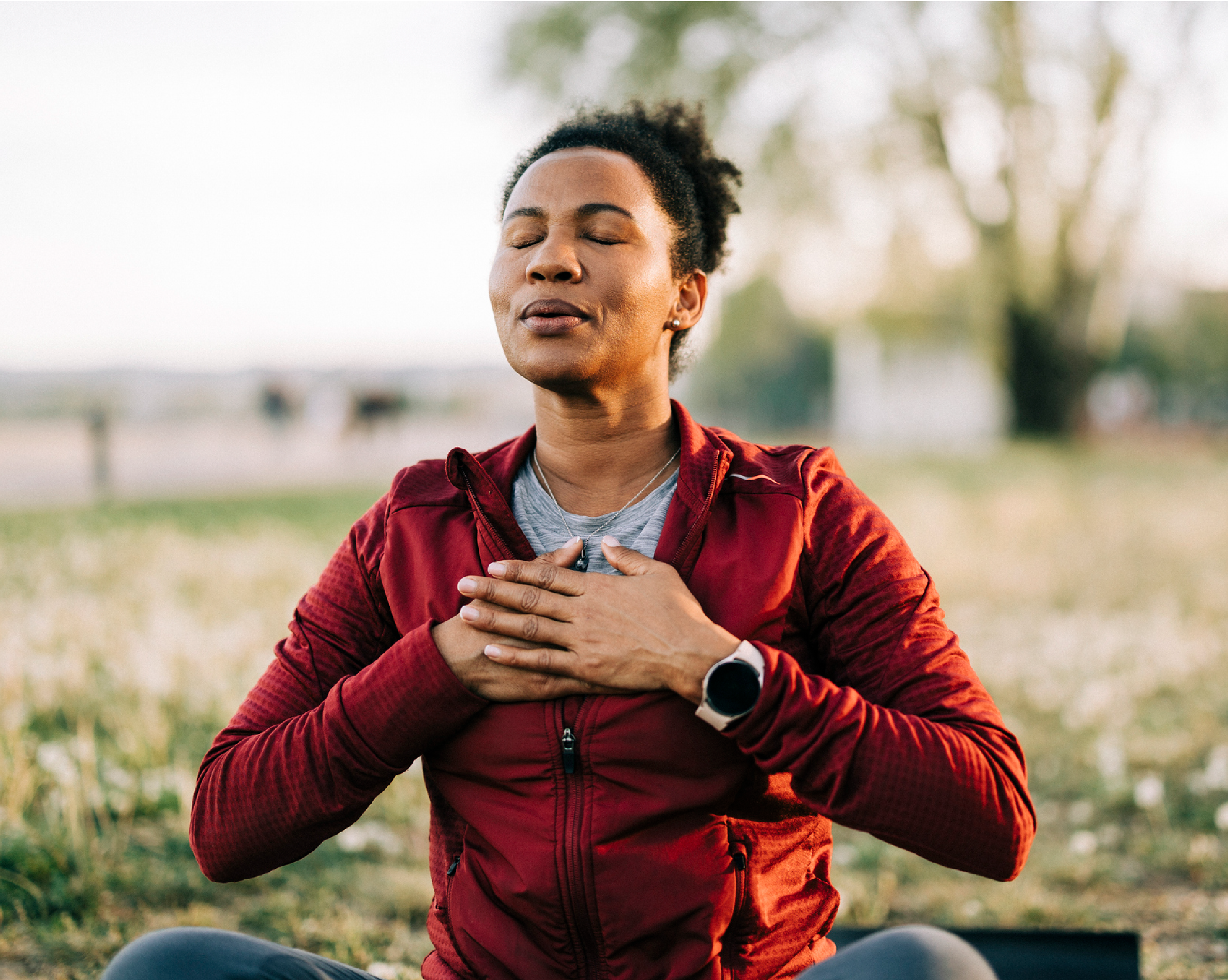Your mind and body are inextricably connected. Experts have known for a long time that the way you think affects the way you feel, and the way you feel affects the way you think. Your emotional and physical health are interdependent. That’s why it’s important to keep the two in harmony, especially if you live with a chronic condition.
Studies show that chronic diseases are often related to stress. Just as important, these studies also reveal that practicing mindfulness can boost the immune system and reduce or prevent stress-related symptoms to help patients better cope with pain, depression, fatigue, and difficulty sleeping.
How does mindfulness calm the internal chaos? It turns out mindfulness actually triggers the release of feel-good chemicals in the brain that soothe stress and anxiety. It also prevents the release of hormones that raise blood pressure and kick your body into high alert, also known as “fight or flight” mode.
Given its tangible benefits, we’ve been inspired to kick off a new blog series at AOM Infusion — Practicing Mindfulness. Each month, a new entry will share ways you can tap into the power of mindfulness to enhance your well-being and quality of life.
What Exactly Is Mindfulness?
Mindfulness is the practice of being conscious in the present moment. It’s about learning ways to not only respond to negative emotions, but to diffuse them. Rather than push painful thoughts and emotions away, mindfulness helps us deal with them directly so we can move past them.
For individuals living with a serious medical condition, mindfulness helps us recognize that fear, loneliness, and sadness are temporary feelings. While they may seem overwhelming and long-lasting when they rear their ugly heads, mindfulness gives us perspective. It reassures us that negative emotions aren’t permanent; they only last a short time.
When we are mindful and focus on the present, we don’t worry about the past or future events that are beyond our control. We understand that dwelling on them will only lead to stress, anxiety, and fear.
Mindfulness encourages us to find peace and a sense of control. It helps us focus on the most meaningful and important aspects of our lives. Just as important, it encourages us treat ourselves and others with compassion.
The Three Pillars of Mindfulness
Mindfulness is built on three pillars: intention, attention, and attitude.
Intention
In order to successfully tap into the benefits of mindfulness, it’s helpful to purposefully engage fully with the present. Start by asking yourself one big question: What is important to me? Your answers will serve as guideposts to center your focus on the present state of your life and ways to better cope with circumstances you may face, including symptoms of a chronic condition.
Attention
As with nearly every pursuit in life, little progress is made without sincere attention. When we lend our full attention to mindfulness, the brain has an easier time staying focused in the present and on our priorities. By being attentive, we can find peace and gain a sense of control over our situation, whether that’s coping with pain, depression, fatigue, or trouble sleeping.
Attitude
A positive attitude makes a tremendous difference in so many scenarios. It’s no different with the practice of mindfulness. Your attitude colors the quality of attention you give to a mindfulness exercise. If you feel bitter or angry, chances are you won’t find much peace or feel a sense of control over anything. Strive for a kind and patient attitude that invites a sense of calm.
Ways to Practice Mindfulness
It’s important to take a few minutes each day to nurture yourself with activities that help you reach a state of mindfulness. Here are four you may want to try.
Breathe in goodness, exhale tension. By concentrating on the simple act of breathing, you focus your attention firmly on the present. Inhaling and exhaling each breath with purpose lowers stress and calms your body — especially if stress is triggering anxiety or panic attacks. Take in slow, deep breaths. When you breathe deeply, you inhale more oxygen. The more oxygen you get, the less tense, anxious, and angry you will feel. Just five minutes a day can make a difference. Plus, breathing can literally be done anywhere, anytime.
Meditate every now and Zen. Take a few minutes to clear your mind at least once a day. Studies show that quiet reflection lowers blood pressure and reduces fear and anger. People who meditate regularly have 80 percent less heart disease and 50 percent less cancer. All you need is a quiet place indoors or outdoors where you can be comfortable. You can meditate while sitting, lying down, standing, or walking — just maintain a comfortable posture that lets you relax and focus your attention. You may wish to visualize pleasant images, silently or softly chant a word or phrase, or simply focus on the rhythm of your breathing.
Walking
By combining the benefits of physical exercise and mindfulness, mindful walking simultaneously nurtures your physical and mental well-being. You can reap the rewards with just five to 10 minutes each day. Mindful walking in nature offers stress-busting and mood-boosting benefits. Just be sure to walk at a slow pace rather that allows you to pay attention to the beauty of your surroundings. Be sure to take slow, deep breaths as you walk. Note the way your body feels as you move with purpose. Also, pay attention to the way you feel emotionally. If you like, you can chant a simple phrase or word, or count steps to stay focused as you walk.
Journaling
Carving out a bit of time each day to write down your uncensored thoughts and feelings can be a powerful tool for gaining insights into your life while also nurturing well-being. Journaling is great for focusing your attention because you can only write about one thing at a time. It helps us find meaning in our experiences, behaviors, and feelings. That’s why it’s best to let your thoughts and words flow without editing. Sentence structure doesn’t matter. All that matters is your feelings, so be honest. Short bursts of journaling about what’s on your mind can be very revealing. When you go back over your entries, you’re likely to learn new things about yourself.
More to Come
Over the next months, we’ll highlight more easy ways to help incorporate mindfulness into your daily life. Remember, at AOM Infusion, we’re here for you. Thank you for entrusting us with your care. Any time you have a question or concern, we’re happy to talk with you.
Call us at 800-746-9089 to speak with a member of our patient care team.
Sources:
Mindfulness Exercises. Mayo Clinic. 2022.
Mindful Breathing. Greater Good in Action Center, University of Southern California Berkley. 2025.
Mindful Walking. American Psychological Association. 2023.
6 Ways to Enjoy Mindful Walking. Mindful. 2023.
How Mindful Journaling Can Help Your Daily Practice. Mindful. 2024.






